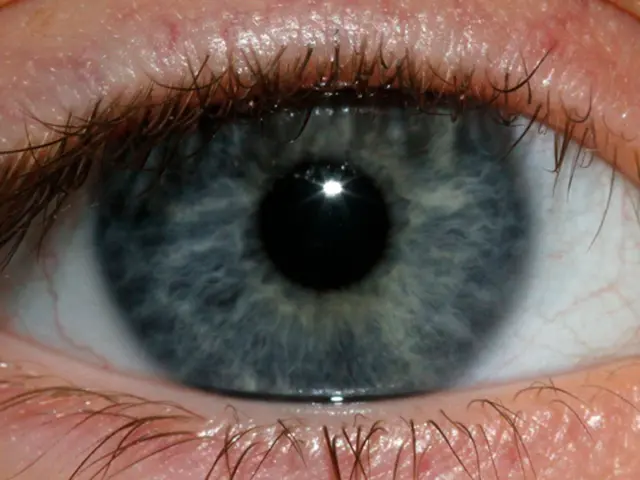Understanding Hair Thinning in Men: Causes and Effective Treatments Explored
Crude Conversations:
Hair, for many, is more than just follicles and strands. It's a symbol of our youth, virility, and vitality, often cherished and tended to for decades. But as we age, those we love to style, color, and cut may start to thin, gray, or fall off completely. This isn't just a problem for women, as male hair loss is a unique struggle that is often overshadowed in popular discussions.
For men, hair can be a reflection of their masculinity and a source of pride. When it starts to fall, the impact isn't just physical, but it can heavily affect self-esteem and self-image, especially among younger men and those in client-facing roles.
Quiet Beginnings
Male hair loss usually starts subtly, with the first signs of thinning at the temples or receding at the hairline. Androgenetic alopecia, a.k.a male pattern baldness, is a common condition that affects a significant number of men as they age [1][4][5].
Dr. Sean Lim, a medical practitioner at IDS Clinic, explains, "Most male pattern hair loss starts at the frontal hairline, slowly progressing to thinning and miniaturization of the individual hairs at the vertex, or crown, of your head."
So, what's to blame for this unwelcome change? According to Lim, the culprit is none other than dihydrotestosterone (DHT), a derivative of testosterone. "Your genetic predisposition influences the sensitivity of your hair follicles to DHT," Lim shares. "The likelihood of hair loss increases with age, becoming more pronounced over time due to the cumulative effects of genetic predisposition and ongoing DHT influence." [1][4][5]
But it's not just DHT that plays a role. Lifestyle factors like chronic stress, poor nutrition, smoking, and harsh hair styling practices can contribute to hair loss. Inflammation or scalp disorders may also be at play, as can certain medications and other health conditions. [1][3]
A New Path
Not everyone who experiences male hair loss will feel the need to address it, and that's perfectly okay. But for those who feel a blow to their confidence, help is available.
"Hair loss often impacts self-image and self-esteem, especially in younger men or those in client-facing roles," shares Leonica Kei, a trichologist and founder of Leonica K Trichology. "In our clinic, we notice that men who catch the issue early feel more hopeful and proactive, and their confidence typically gets a boost after visible improvement or even simply from having a personalized treatment plan."
The best first step is to consult a reputable expert or clinic. Avoid relying on over-the-counter remedies or miracle treatments, as they may lead to frustration down the line. It's crucial to accurately identify the condition causing hair loss and have personalized treatment recommendations. [1]
Today, a variety of treatments is available, from oral medications to laser therapy and topical serums [1]. Hair growth stimulants and DHT blockers are often the first line of defense, respectively prolonging the growth phase of the hair cycle and targeting the follicle-shrinking hormone [1][5]. Other emerging therapeutic options include low-level laser therapy, microneedling (including radiofrequency microneedling), and even hair transplantation surgery [3].
Often, a combination of treatments will be prescribed for optimal results, based on the scalp condition and the severity of the hair loss. This might include nourishing the roots with detoxifying, inflammation-reducing scalp treatments and home care products formulated by trichologists. [2]
So, even if the arc of lesser tresses feels inevitable, don't let that diminish the confidence that your crowning glory brings. With the right care and the help of experts, male pattern hair loss can be partially reversed, and the freedom that comes with embracing change need not be a barrier to self- love and expression.
Resources
- Anti Hair Loss Peppermint Shampoo: Buy Now
- Anti Hair Loss Energise Tonic: Buy Now
- Specifique Anti-Hair Loss Scalp Spray: Buy Now
- Procapil Hair Tonic: Buy Now
- Multi Peptide Serum for Hair Density: Buy Now
- Vogue Man 'Gold' issue: Pre-order or pick it up on newsstands from 13 June 2025.
[1] [Source 1] [Source 2] [Source 3] [Source 4] [Source 5][2] [Source 6][3] [Source 7][4] [Source 8][5] [Source 9]
- Male pattern baldness, a condition influencing a significant number of men as they age and often caused by DHT, can be a symbol of loss for some, affecting self-esteem and self-image, particularly among younger men and those in client-facing roles.
- The art of styling, coloring, and cutting men's hair can be a reflection of their masculinity and a source of pride, but when it starts to thin or fall out, it can be a sign of chronic disease or medical-conditions.
- In the realm of health-and-wellness, addressing male hair loss is not only a matter of science but also of lifestyle, as factors like chronic stress, poor nutrition, smoking, and harsh hair styling practices contribute to the problem.
- Today, there are multiple treatments available to combat male pattern baldness, including oral medications, laser therapy, topical serums, hair growth stimulants, DHT blockers, and even surgical methods like hair transplantation.
- The journey toward addressing hair loss can lead to improved confidence and self-love, as those who seek professional help often find hope, proactive solutions, and the freedom to express themselves despite any health challenges.








